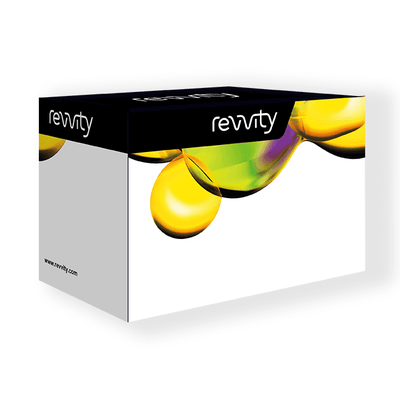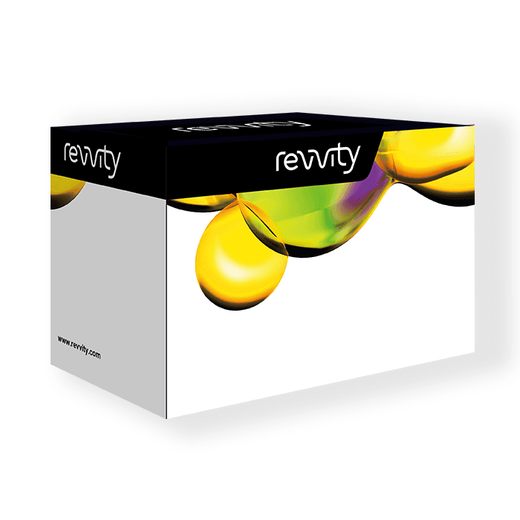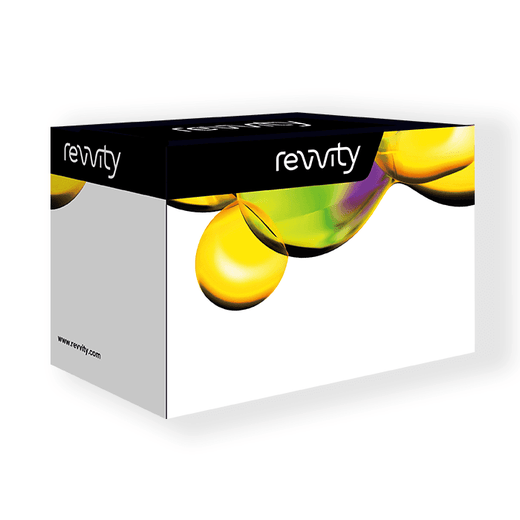

HTRF Human Total CDK7 Detection Kit, 10,000 Assay Points


HTRF Human Total CDK7 Detection Kit, 10,000 Assay Points






This lysate is a component of the Total CDK7 kit. It may be used as a positive control for CDK7 protein quantification.
For research use only. Not for use in diagnostic procedures. All products to be used in accordance with applicable laws and regulations including without limitation, consumption and disposal requirements under European REACH regulations (EC 1907/2006).
| Feature | Specification |
|---|---|
| Application | Cell Signaling |
| Sample Volume | 16 µL |
This lysate is a component of the Total CDK7 kit. It may be used as a positive control for CDK7 protein quantification.
For research use only. Not for use in diagnostic procedures. All products to be used in accordance with applicable laws and regulations including without limitation, consumption and disposal requirements under European REACH regulations (EC 1907/2006).



HTRF Human Total CDK7 Detection Kit, 10,000 Assay Points



HTRF Human Total CDK7 Detection Kit, 10,000 Assay Points



Product information
Overview
The Total CDK7 cellular assay monitors CDK7 protein levels.
Cyclin-dependent kinase 7 (CDK7) has dual functions in cells: CDK-activating kinase (CAK) that regulates cell cycle progression by phosphorylation of CDK1, CDK2, and CDK4/6, and is also a component of transcription factor II H (TFIIH) that regulates transcriptional initiation through phosphorylation of the RNA polymerase II C-terminal domain (CTD).
Therefore, inhibition of CDK7 has good potential for restoring a controlled cell cycle through the regulation of multiple cell cycle checkpoints, and has emerged as a new potential cancer therapy through cancer specific transcriptional regulation.
Specifications
| Application |
Cell Signaling
|
|---|---|
| Automation Compatible |
Yes
|
| Brand |
HTRF
|
| Detection Modality |
HTRF
|
| Lysis Buffer Compatibility |
Lysis Buffer 1
Lysis Buffer 4
|
| Molecular Modification |
Total
|
| Product Group |
Kit
|
| Sample Volume |
16 µL
|
| Shipping Conditions |
Shipped in Dry Ice
|
| Target Class |
Phosphoproteins
|
| Target Species |
Human
|
| Technology |
TR-FRET
|
| Therapeutic Area |
Oncology & Inflammation
|
| Unit Size |
10,000 Assay Points
|
Video gallery

HTRF Human Total CDK7 Detection Kit, 10,000 Assay Points

HTRF Human Total CDK7 Detection Kit, 10,000 Assay Points

How it works
Total CDK7 assay principle
The Total CDK7 assay quantifies the expression level of CDK7 in a cell lysate. Unlike Western Blot, the assay is entirely plate-based and does not require gels, electrophoresis, or transfer. The Total CDK7 assay uses two labeled antibodies, one coupled to a donor fluorophore and the other to an acceptor. Both antibodies are highly specific for a distinct epitope on the protein. In the presence of CDK7 in a cell extract, the addition of these conjugates brings the donor fluorophore into close proximity with the acceptor and thereby generates a FRET signal. Its intensity is directly proportional to the concentration of the protein present in the sample, and provides a means of assessing the protein's expression under a no-wash assay format.

Total CDK7 two-plate assay protocol
The two-plate protocol involves culturing cells in a 96-well plate before lysis, then transferring lysates into a 384-well low volume detection plate before the addition of Total CDK7 HTRF detection reagents. This protocol enables the cells' viability and confluence to be monitored.

Total CDK7 one-plate assay protocol
Detection of Total CDK7 with HTRF reagents can be performed in a single plate used for culturing, stimulation, and lysis. No washing steps are required. This HTS designed protocol enables miniaturization while maintaining robust HTRF quality.

Assay validation
Validation of the specificity of Total CDK7 assay by siRNA experiments
HeLa cells were plated in 96-well plates (10,000 cells/well) and cultured for 24h. The cells were then transfected with siRNAs specific for CDK1, CDK2, CDK4, CDK6, CDK7, CDK9, or CDK12, as well as with a negative control siRNA. After a 48h incubation, the cells were lyzed and 16 µL of lysates were transferred into a 384-well low volume white microplate before the addition of 4 µL of the HTRF Total CDK7 detection antibodies. An additional 4 µL of lysates (suplemented with 12 µL diluent #11) was also transferred into the microplate to monitor GAPDH level using the GAPDH Housekeeping Cellular Kit (64GAPDHPET/G/H). HTRF signals for both kits were recorded after an overnight incubation.
Cell transfection with CDK7 siRNA led to a 73% signal decrease compared to the cells transfected with the negative siRNA. No signal decrease was observed for cells transfected with CDK1, CDK2, CDK4, CDK6, CDK9, and CDK12 siRNAs. The level of GAPDH measured remained unchanged under all the conditions tested. The data demonstrates that the HTRF Total CDK7 assay is specific for the detection of CDK7 protein and does not cross-react with other CDK family members.


Assessment of total CDK7 levels in human cell lines
Various human cell lines, either adherent HeLa, MCF7, or SHSY5Y cells, or suspension, such as K562 cells, were seeded at 100,000 cells / well in a 96-well microplate. After a 24H incubation, the cells were lyzed with supplemented lysis buffer, and 16 µL of lysate were transferred into a 384-well low volume white microplate before the addition of 4 µL of the HTRF Total CDK7 detection reagents. The HTRF signal was recorded after an overnight incubation.

HTRF total CDK7 assay compared to Western Blot
HeLa cells were cultured in a T175 flask in complete culture medium at 37°C-5% CO2. After a 48h incubation, the cells were lysed with 3 mL of supplemented lysis buffer #1 (1X) for 30 minutes at RT under gentle shaking.
Serial dilutions of the cell lysate were performed using supplemented lysis buffer, and 16 µL of each dilution were transferred into a low volume white microplate before the addition of 4 µL of HTRF Total CDK7 detection reagents. Equal amounts of lysates were used for a side by side comparison between HTRF and Western Blot.
Using the HTRF Total CDK7 assay, 1250 cells/well were enough to detect a significant signal, while 5,000 cells were needed using Western Blot with an ECL detection. Therefore in these conditions, the HTRF Total CDK7 assay is 4 times more sensitive than the Western Blot technique.

Simplified pathway
Role of CDK7 in the cell-division cycle
CDKs are traditionally separated into 2 subfamily members: CDKs that coordinate cell cycle progression (CDK1, CDK2, CDK4, and CDK6) and transcriptional CDKS (CDK7, CDK8, CDK9, CDK12, and CDK13).
CDK7 (cyclin dependant kinase 7 ) is both a CDK-activating kinase (CAK), which phosphorylates cell-cycle CDKs (CDK1-CDK2-CDK4 and CDK6), and a component of the general transcription factor TFIIH, which regulates the initiation of the transcription through phosphorylation of the C-terminal domain (CTD) of the RNA Pol II.

Resources
Are you looking for resources, click on the resource type to explore further.
This guide provides you an overview of HTRF applications in several therapeutic areas.


How can we help you?
We are here to answer your questions.






























